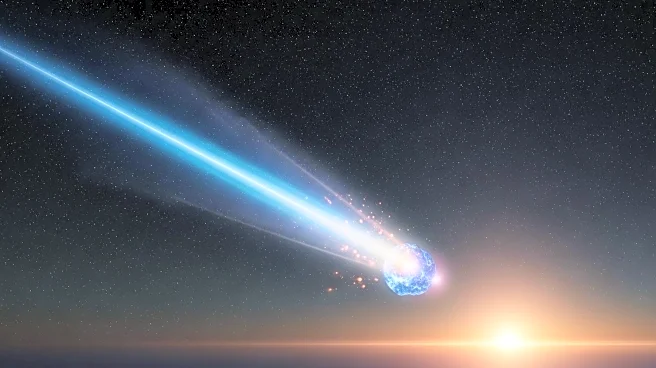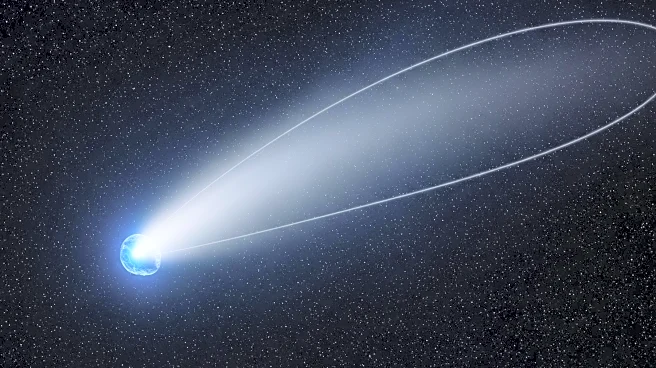What is the story about?
What's Happening?
A team of astronomers led by Sihao Cheng has discovered a new trans-Neptunian object (TNO) named 2017 OF 201 at the edge of the solar system. This object, potentially large enough to be classified as a dwarf planet, challenges previous assumptions about the emptiness of space beyond Neptune in the Kuiper Belt. The discovery was made using advanced computational methods and data from the Victor M. Blanco Telescope and Canada France Hawaii Telescope. The object's extreme orbit, which takes approximately 25,000 years to complete, suggests a complex history of gravitational interactions, possibly involving close encounters with giant planets.
Why It's Important?
The discovery of 2017 OF 201 has significant implications for our understanding of the solar system's outer regions. It suggests that the area beyond the Kuiper Belt may not be as empty as previously thought, potentially housing numerous other objects. This finding could challenge existing theories about the solar system's formation and the hypothesized Planet X or Planet Nine, which is believed to influence the orbits of TNOs. The research highlights the importance of open science, as the data used was publicly available, demonstrating that significant discoveries can be made by a wide range of researchers.
What's Next?
Further observations are needed to determine the exact size of 2017 OF 201, potentially using radio telescopes. The discovery encourages continued exploration of the solar system's outer regions, which may lead to the identification of more TNOs. This could provide further insights into the solar system's formation and the potential existence of additional planets. The findings also underscore the value of open scientific data, suggesting that future discoveries could be made by researchers with access to similar resources.
AI Generated Content
Do you find this article useful?














